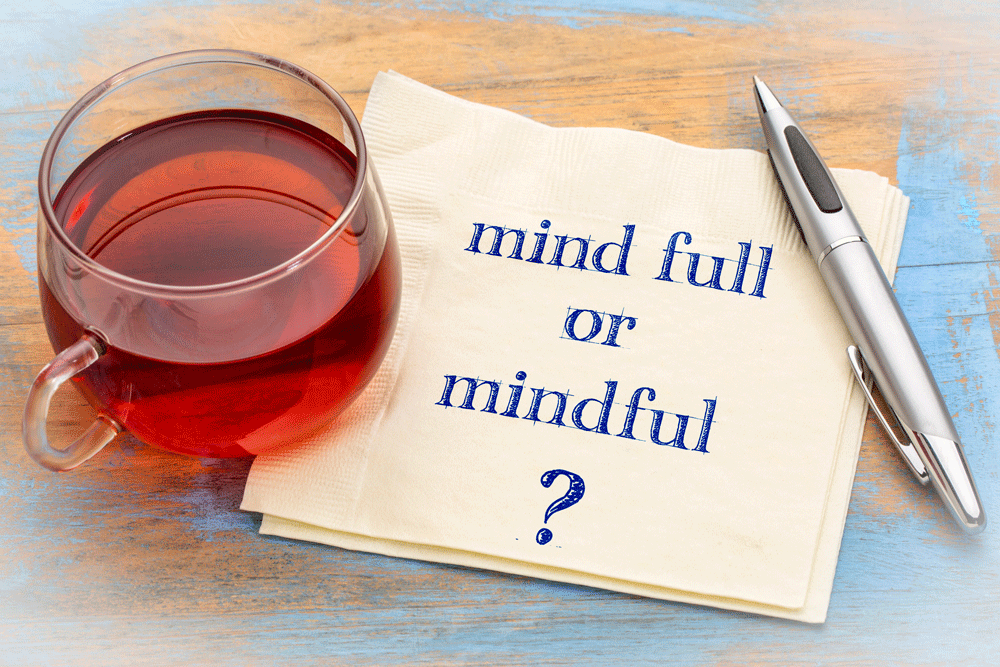The difference between solitude and loneliness
Loneliness is often misunderstood as simply being alone, but this misconception couldn't be further from the truth. Loneliness and solitude are two distinct states of being that profoundly impact our emotions and mental well-being.
In this article, we will delve into the disparities between loneliness and solitude, exploring various philosophies on harnessing solitude to enrich our lives. We will also discuss how to manage
anxiety, stress, and combat
depression
through the power of solitude. Lastly, we will provide guidance on transitioning from loneliness to solitude and delve into the philosophical distinctions between these two states of being.
What is loneliness?
Loneliness is a complex and subjective emotional state characterised by isolation, disconnection, or feeling alone. It is a deep longing or lack of companionship, social interaction, or meaningful relationships. Loneliness can occur even when a person is physically surrounded by others if they don't feel understood, accepted, or emotionally connected to those around them.
Loneliness is not simply the absence of people around; it is a deeper sense of being disconnected or alienated from others. It can be influenced by various factors, such as social, psychological, and environmental circumstances.
For example, someone may feel lonely due to losing a loved one, geographical distance from family and friends, social isolation, lack of social skills or opportunities, or feeling different or misunderstood.
Loneliness can significantly negatively affect a person's mental, emotional, and physical well-being. Prolonged loneliness increases the risk of mental health issues such as depression, anxiety, and low self-esteem. It can also contribute to physical health problems like high blood pressure, weakened immune systems, and sleep disturbances.
It is important to note that loneliness is a subjective experience, and different people may perceive and experience it differently. It is a common human emotion and can affect anyone at other times, regardless of age, gender, or social status. Addressing loneliness often involves fostering meaningful connections, seeking social support, engaging in activities promoting a sense of belonging, and caring for one's mental and emotional well-being.
What is solitude?
Solitude refers to being alone or secluded, often by choice. It is a deliberate and voluntary act of seeking or enjoying time spent in solitude without feeling lonely or isolated. Solitude is about finding solace, peace, and reflection in one's company.
While loneliness is characterised by a sense of disconnection and longing for companionship, solitude is a positive and intentional experience. It can allow self-reflection, introspection, creativity, and personal growth. Solitude will enable individuals to recharge, gain clarity, and find inner peace away from the demands and distractions of the external world.
Solitude can be achieved in various ways, such as spending time in nature, engaging in hobbies or activities that one enjoys, meditating, reading, or simply being alone with one's thoughts. It is a state that many people actively seek to enhance their well-being and personal development.
It's important to note that while solitude can be a valuable and rejuvenating experience, excessive or prolonged isolation from social connections can negatively affect mental and emotional well-being. Striking a balance between solitude and social interaction is essential for overall psychological health.
Henry Thoreau's philosophy on solitude
Henry Thoreau
is an iconic figure in American literature who advocated for solitude and self-reflection.
His philosophy of embracing moments of peaceful, reflective solitude has become a cornerstone of modern thought, inspiring many to seek out serene contemplation.
Thoreau's writings on the power of solitary contemplation offer timeless insight into how we can lead happier, more meaningful lives by recognizing the value of being alone.
Thoreau believed that taking time to be alone and completely unplug from the outside world provided an opportunity for true self-reflection and spiritual growth.
He further argued that by finding isolation, we can gain clarity on how to lead meaningful lives and make decisions without relying on the opinions of others. By embracing moments of solitude, Thoreau believed, we can develop an authentic, meaningful relationship with ourselves.
While Thoreau's philosophy on solitude may seem counterintuitive in today's world of constant connection and distraction, his teachings are timeless and still hold relevance today.
Victor Frankl's philosophy on solitude
In a hustle and bustle world, finding time for ourselves can be hard. But did you know that solitude is not something to fear or avoid but rather a crucial part of our well-being?
This is the philosophy of
Victor Frankl, psychiatrist and Holocaust survivor, who wrote extensively on the importance of personal reflection and being alone with one's thoughts. In this philosophy, loneliness is not something to be dreaded but an opportunity for self-discovery and greater understanding. One can gain insight into their innermost thoughts, desires, and motivations by embracing solitude. This can result in a greater sense of fulfilment and personal growth.
In his book Man's Search for Meaning, Frankl writes, "only through the experience of solitude can we find out what are the true values in life and what we really care about." He also discusses how spending time alone can help us appreciate nature's beauty, understand our relationships with other people, and gain a deeper understanding of our own nature. Ultimately, solitude is not something to be feared but embraced as an opportunity for personal growth.
Frankl also believed that solitude could be a tool for self-improvement. By taking the time to be alone and reflect, one can gain clarity on their goals in life and develop strategies to achieve them. Only through personal reflection can we gain insight into our strengths and weaknesses and begin to work on improving ourselves. Taking the time for solitude allows us to focus on what is important and what needs to be done, free from the distractions and demands of everyday life.
In summary, Victor Frankl's philosophy on solitude stresses its importance in understanding our purpose in life and personal growth. By being alone and reflecting, we can gain clarity on our goals and develop strategies for success. Furthermore, it allows us to gain insight into our innermost thoughts, desires and motivations. Ultimately, solitude is not something to be feared but embraced as an opportunity for self-discovery.
Alfred North Whitehead's philosophy on solitude
Solitude can be difficult to grapple with, but its importance cannot be understated. Alfred North Whitehead's philosophy on the subject is particularly insightful and enriching.
Through his writings, Whitehead provides us with an understanding of why embracing moments of solitude can benefit our mental, physical, and spiritual well-being.
Whitehead believed that time spent alone was essential for developing our intellect. He argued that we should strive to "discover ourselves" in moments of seclusion as it allows us to better understand who we are and where we stand in relation to the world around us. By cultivating an appreciation for solitude, we can develop a sense of self-awareness that can be incredibly beneficial in our personal and professional lives.
In addition to the intellectual benefits of embracing solitude, Whitehead also suggested that it could nourish us spiritually. He believed that spending time alone enabled us to connect with our innermost being and reflect on our relationship with the divine. As a result, we could become more in tune with our spiritual purpose and gain an appreciation for life's sacred moments.
Finally, Whitehead suggested that embracing solitude could also benefit our physical health. He argued that taking the time for self-reflection allowed us to relax and rejuvenate our bodies and minds, thus providing us with a better sense of balance and well-being.
Ultimately, Alfred North Whitehead's philosophy on solitude provides us with an understanding of why taking the time for self-reflection is essential to our overall health and well-being. By cultivating an appreciation for moments of seclusion, we can gain a greater sense of self-awareness, spiritual nourishment, and physical rejuvenation.
Soren Kierkegaard's philosophy on solitude
Solitude has been explored and meditated on for centuries, but few thinkers have penetrated its depths as deeply as Soren Kierkegaard. Widely considered the first existential philosopher, Kierkegaard's philosophy on solitude is one of the most influential in modern thought.
His ideas on the power of self-reflection and understanding oneself are essential for those looking to understand the human condition.
At the heart of Kierkegaard's philosophy on solitude is that to truly understand ourselves, we must first be able to exist independently from society and its expectations. This requires engaging in a process of self-reflection and honest examination of our values, desires, and beliefs. In this way, solitude allows us to come into contact with our true selves.
Kierkegaard also believed that solitude was a necessary component of developing faith. Being alone and reflecting on one's beliefs makes it possible to create a more genuine and meaningful connection to whatever one holds sacred. This can be seen in his famous quote, "Prayer does not change God, but it changes him who prays." With this, Kierkegaard implies that turning inward and reflecting on one's faith can make it more meaningful and powerful.
Kierkegaard was also aware of the potential pitfalls of solitude. He warned against using it to escape from the world or avoid confronting difficult realities. He argued that true growth only occurs when we can accept our mortality and our limitations rather than using solitude to avoid them.
Ultimately, Soren Kierkegaard's philosophy on solitude emphasises the importance of self-reflection and honest examination to truly understand oneself. It is a philosophy that encourages us to develop meaningful connections with whatever we hold sacred and to accept the realities of our mortality and limitations. In this way, Kierkegaard's ideas on solitude remain as relevant today as ever.
Transitioning from loneliness to solitude
For those of us struggling with loneliness, it can be difficult to transition to solitude. The key is to approach being alone as a positive experience; instead of viewing it as an isolating or negative process, try to focus on the positives of spending time with yourself. This could include engaging in activities such as walking in nature, reading a book, or simply reflecting on your thoughts and feelings.
Finally, it is important to remember that loneliness and solitude are distinct states of being. While both can lead to feelings of isolation, loneliness is an emotion which arises from a lack of meaningful social interaction. In contrast, solitude is an intentional practice of being alone with oneself. As we have seen, if approached correctly, solitude can be a powerful tool for gaining insight into ourselves and our lives.
For further help, consider attending a Just Breathe
mindfulness course or one of our
spiritual retreats.



